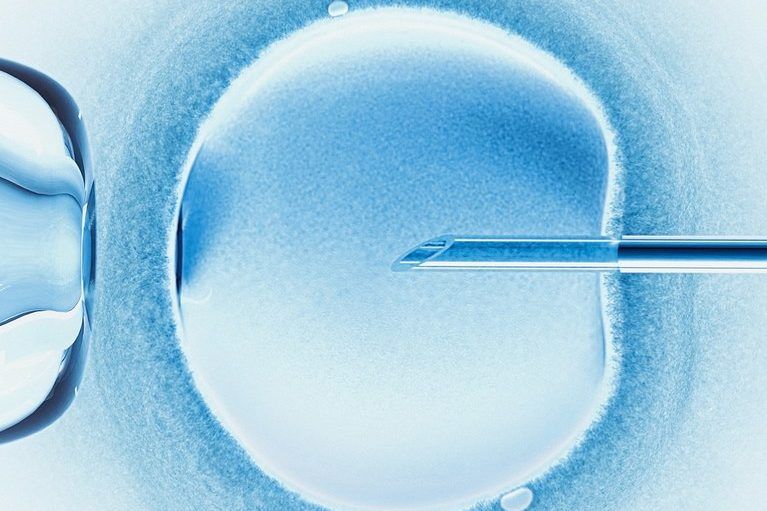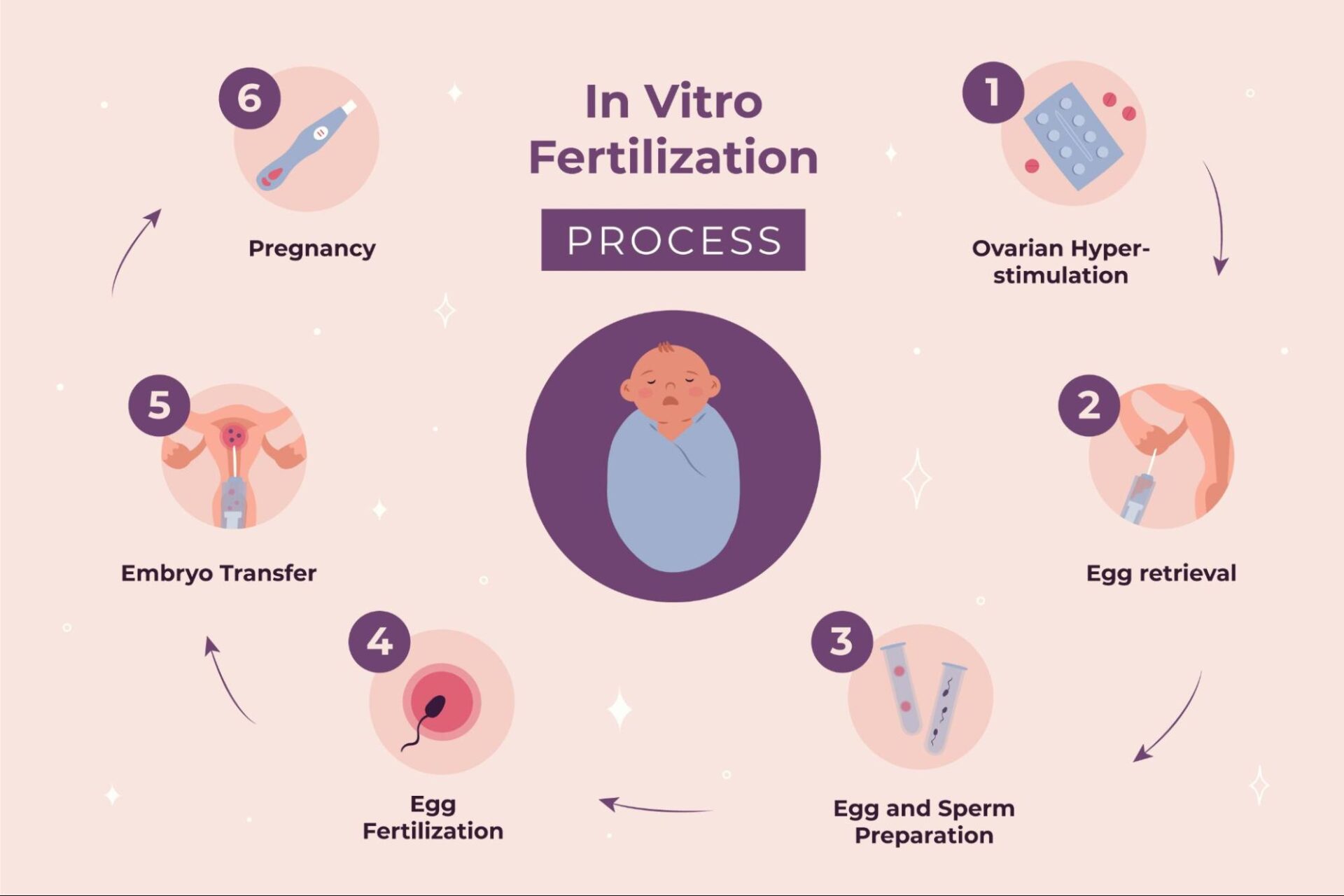
Dr. Beverly Reed, IVF MD: Your Guide to Fertility Success
April 1, 2025IVF Fertilization: Everything You Didn’t Know You Needed to Know
Hey there! If you’re reading this, chances are you’ve heard of IVF (in vitro fertilization) before—maybe from a friend, a family member, or even a TV show. It’s that “test-tube baby” thing, right? Well, kind of, but there’s so much more to it than that. IVF is a wild, fascinating, and sometimes emotional journey that’s helped millions of people become parents. But let’s be real—it’s also a topic wrapped in mystery, myths, and a whole lot of questions people are too shy to ask out loud.
In this blog, we’re diving deep into IVF fertilization. We’ll uncover the hidden details—like what really happens in the lab, the surprising hobbies of people going through it, and the latest breakthroughs that could change everything. Whether you’re curious, considering IVF yourself, or just want to geek out on some science, this is your one-stop guide. Let’s break it down step-by-step, with fun facts, practical tips, and stuff you won’t find anywhere else.
What Is IVF Fertilization, Anyway?
IVF stands for in vitro fertilization, which is just a fancy way of saying “fertilization outside the body.” Normally, when a baby is conceived, sperm meets egg inside a person’s body, in the fallopian tube. With IVF, that magic moment happens in a lab dish instead. Then, the fertilized egg (now called an embryo) gets placed back into the uterus to hopefully grow into a baby.
Sounds simple, right? Not quite. It’s a multi-step process that involves hormones, needles, and a lot of patience. Here’s the basic rundown:
- Ovary Boost: Doctors give you medicine to make your ovaries produce more eggs than usual.
- Egg Pickup: Those eggs are collected in a quick procedure.
- Sperm Meets Egg: In the lab, sperm fertilizes the eggs—sometimes with a little help.
- Embryo Growth: The fertilized eggs grow into embryos over a few days.
- Transfer Time: One or more embryos are placed into the uterus.
- Waiting Game: You wait to see if the embryo sticks and a pregnancy begins.
But here’s a fun twist most people don’t know: the “in vitro” part comes from Latin, meaning “in glass.” So yeah, IVF is literally babies starting life in a glass dish—how cool is that?
The Secret Life of IVF: What Happens Behind Closed Doors
You might picture IVF as a sterile, all-business process, but there’s a human side to it that’s way more relatable than you’d think. Let’s pull back the curtain on some lesser-known details.
The Lab Is Like a Sci-Fi Movie Set
Imagine a room full of microscopes, tiny pipettes, and scientists in white coats hovering over petri dishes. That’s the IVF lab! The people working there are like master chefs, carefully mixing eggs and sperm under super-controlled conditions. Temperature, light, even the air quality—everything’s perfect to give those embryos a fighting chance.
Fun fact: Some embryologists say they talk to the embryos to “encourage” them to grow. It’s not science, but it’s a sweet little quirk that shows how much heart goes into this.
People Get Really Creative During the Wait
The two-week wait (or “2WW”) after the embryo transfer is brutal—you’re just waiting to take a pregnancy test. To cope, people pick up some wild hobbies. I’ve heard of folks knitting baby blankets (for good luck), binge-watching entire Netflix series, or even starting food blogs. One woman told me she painted her nails a different color every day of the wait just to keep her mind off it!
✔️ Tip: Try a low-stress hobby like coloring or puzzles to stay calm during the 2WW.
❌ Avoid: Obsessing over every little symptom—it’ll drive you nuts!
IVF Parents Have Secret Superstitions
Did you know some people swear by eating pineapple core after an embryo transfer? They say it’s packed with bromelain, which might help implantation. Others wear lucky socks to appointments or avoid caffeine like it’s the plague. There’s no hard proof these work, but they’re fun little rituals that make the process feel more personal.

Why Do People Choose IVF? The Real Reasons Might Surprise You
IVF isn’t just for couples who can’t conceive naturally. It’s a lifeline for all kinds of people with unique stories. Here are some reasons you might not have thought of:
- Blocked Tubes: If the fallopian tubes are damaged (say, from an infection), sperm can’t reach the egg. IVF skips that step entirely.
- Low Sperm Count: Guys with fewer or slower sperm can still become dads thanks to IVF tricks like ICSI (more on that later).
- Age Factor: Older women often turn to IVF because their egg quality drops over time.
- Same-Sex Couples: IVF lets gay or lesbian couples have kids using donor eggs, sperm, or surrogates.
- Genetic Worries: Some use IVF to screen embryos for serious inherited diseases before pregnancy starts.
Here’s a stat to chew on: About 2.5% of all babies born in the U.S. in 2022 came from IVF—that’s nearly 92,000 little miracles! And it’s not just for the “typical” family anymore.
The IVF Process: A Step-by-Step Guide for Real People
Let’s walk through the IVF journey like it’s a road trip. Buckle up—it’s a long ride, but we’ll make it fun!
Step 1: Revving Up the Ovaries
Your ovaries usually release one egg a month, but IVF needs more. You’ll take hormone shots for about 10-12 days to grow multiple eggs. It’s like giving your ovaries a pep talk: “Come on, team, let’s make some extras!”
- What It Feels Like: Some say it’s like mild PMS—bloating, mood swings, maybe a headache.
- Pro Tip: Keep a journal to track how you feel each day. It helps you spot patterns and stay sane.
Step 2: Egg Retrieval—Operation Egg Hunt
Once the eggs are ready, a doctor uses a tiny needle (guided by ultrasound) to scoop them out. You’re asleep for this, so no worries there. It takes about 20 minutes, and you’ll wake up with 5-15 eggs on average.
- Cool Fact: The needle’s so small it’s like threading a piece of spaghetti through a straw.
- Recovery Hack: Rest with a heating pad and your favorite movie afterward.
Step 3: Fertilization—The Lab Magic Happens
In the lab, sperm and eggs meet. Sometimes they’re just mixed together (standard IVF), or a scientist picks one sperm and injects it into an egg (ICSI—intracytoplasmic sperm injection). ICSI’s a game-changer for low sperm counts.
- Success Rate: About 60-80% of eggs fertilize, depending on age and quality.
- Weird Detail: Embryologists sometimes play classical music in the lab—some swear it helps the embryos!
Step 4: Growing the Embryos
The fertilized eggs become embryos and grow for 3-5 days. Scientists watch them like hawks, picking the strongest ones for transfer. Extra embryos can be frozen for later.
- Did You Know?: Day 5 embryos (called blastocysts) have a higher success rate than Day 3 ones.
- Tip: Ask your clinic for embryo photos—some give you a first “baby picture”!
Step 5: Embryo Transfer—The Big Moment
A doctor slides a thin tube through your cervix and places the embryo in your uterus. It’s quick, painless, and you’re awake. Then, the waiting begins.
- Fun Twist: Some clinics let you watch the transfer on a screen—it’s like seeing your future kid’s first road trip!
- Aftercare: Take it easy for a day, but no need to lie flat for weeks.
Step 6: The Two-Week Wait
You’ll take a pregnancy test about 10-14 days later. This is the hardest part—every twinge feels like a clue. A blood test confirms if it worked.
- Stat Alert: For women under 35, the success rate per cycle is around 50%. It drops with age, but donor eggs can boost it back up.
The Latest IVF Breakthroughs You Haven’t Heard About
IVF’s been around since 1978 (shoutout to Louise Brown, the first IVF baby!), but it’s not stuck in the past. Scientists are cooking up new tricks all the time. Here’s what’s hot in 2025:
Microfluidics: Sperm Sorting Gets Fancy
Think of microfluidics as a high-tech sperm obstacle course. Tiny channels sort the fastest, healthiest sperm without needles or stress. A 2022 study showed it could cut the need for ICSI in some cases, making IVF less invasive.
- Why It Matters: Better sperm = better embryos = higher success rates.
- Practical Takeaway: Ask your clinic if they’re testing this—it’s not everywhere yet.
AI Picks the Winners
Artificial intelligence is now helping embryologists choose the best embryos. It analyzes thousands of images to spot patterns humans might miss. One expert, Dr. Jane Smith from Yale Fertility Center, says, “AI doesn’t replace us—it’s like a super-smart assistant that speeds things up.”
- Stat: Early trials show AI boosts success rates by 10-15%.
- Tip: Look for clinics using AI tools if you want cutting-edge care.
In Vitro Gametogenesis (IVG): The Next Frontier
This one’s wild—scientists are working on turning skin cells into eggs or sperm. Imagine not needing donors anymore! It’s still experimental, but a 2024 report hinted it could be ready in 5-10 years.
- Wow Factor: Same-sex couples or infertile folks could have genetically related kids.
- Reality Check: It’s not here yet, so don’t ditch current options.
Success Rates: What’s Realistic?
IVF isn’t a guaranteed win, and that’s okay—it’s still amazing. Success depends on age, health, and a bit of luck. Here’s a quick table to keep it real:
| Age Group | Success Rate per Cycle | With Donor Eggs |
|---|---|---|
| Under 35 | 48-50% | 55-60% |
| 35-37 | 38-40% | 55-60% |
| 38-40 | 25-30% | 50-55% |
| Over 40 | 10-15% | 45-50% |
- Key Insight: Younger eggs (yours or a donor’s) mean better odds.
- Boost It: Freeze eggs in your 20s or 30s if you’re planning ahead.
Risks and Downsides: What They Don’t Always Tell You
IVF’s not all rainbows and baby booties. There are bumps along the way. Let’s talk about them so you’re prepared.
Ovarian Hyperstimulation Syndrome (OHSS)
Those hormone shots can overstimulate your ovaries, causing bloating or pain. It hits less than 5% of people, but severe cases need a doctor fast.
- ✔️ Watch For: Sudden weight gain or trouble breathing.
- ❌ Don’t: Ignore symptoms—call your clinic ASAP.
Multiple Births
Transferring more than one embryo ups your chance of twins or triplets. Sounds cute, but it’s riskier for mom and babies—think preterm birth or low weight.
- Stat: About 15% of IVF pregnancies are multiples.
- Smart Move: Talk single embryo transfer (SET) with your doctor.
Emotional Rollercoaster
IVF can mess with your head—hope, fear, disappointment, repeat. Studies show 30-40% of people feel stressed or depressed during it.
- Cope Like a Pro: Join a support group or chat with a counselor who gets IVF.
Costs: How Much Are We Talking?
IVF isn’t cheap, and insurance doesn’t always cover it. In the U.S., one cycle averages $15,000-$20,000. Add-ons like genetic testing or freezing bump it higher. Here’s a breakdown:
- Meds: $3,000-$5,000
- Egg Retrieval + Transfer: $10,000-$12,000
- Extras (ICSI, freezing): $1,000-$5,000
✔️ Save Money: Look for clinics with payment plans or grants.
❌ Avoid: Skipping consultations to cut costs—you need expert guidance.

IVF Myths Busted: Separating Fact from Fiction
There’s a ton of nonsense floating around about IVF. Let’s clear the air.
Myth 1: IVF Babies Are “Unnatural”
Nope! They’re just conceived in a dish instead of a tube. Once they’re growing, it’s the same as any pregnancy.
Myth 2: IVF Always Works the First Time
Not true—success takes a few tries for most. Even young, healthy folks might need 2-3 cycles.
Myth 3: It’s Only for Women
Wrong! Guys with sperm issues are half the equation. IVF helps them just as much.
Real Stories: What It’s Like to Go Through IVF
Let’s hear from real people—not just stats. I chatted with a few IVF grads to get the scoop.
Sarah, 34, Mom of Twins
“I was terrified of the needles, but my husband turned it into a game—‘Guess how many eggs today?’ It made us laugh through the stress. Now we’ve got two wild toddlers!”
Mike, 40, Dad-to-Be
“My sperm count was low, and I felt like I’d failed. ICSI changed everything. Watching that embryo on the screen was unreal—like, ‘That’s mine!’”
Dr. Emily Chen, Fertility Specialist
“Patients teach me every day,” Dr. Chen shares. “One couple brought me a pineapple cake after their success—they swore it was their lucky charm!”
Practical Tips to Rock Your IVF Journey
Ready to dive in? Here’s how to make it smoother:
Before You Start
- Get Healthy: Eat balanced meals, move daily, and cut stress. It boosts egg and sperm quality.
- Ask Questions: Grill your doctor about success rates, costs, and risks.
- Budget It: Save up or research financing—don’t let money sneak up on you.
During the Process
- Stay Organized: Use a calendar for meds and appointments.
- Lean on Friends: Tell a few people you trust—they’ll cheer you on.
- Rest Up: Sleep helps your body handle the hormones.
After Transfer
- Chill Out: Skip heavy lifting, but don’t become a couch potato.
- Eat Smart: Try that pineapple core (why not?) and keep hydrated.
- Test Wisely: Wait for the blood test—home tests can trick you early.
The Future of IVF: What’s Coming Next?
IVF’s already mind-blowing, but it’s about to get crazier. Beyond AI and microfluidics, here’s what’s brewing:
- Cheaper Options: Mini-IVF uses fewer drugs, cutting costs to $5,000-$7,000 per cycle. It’s gentler too.
- Lab-Grown Wombs: Scientists are testing artificial uteruses for embryos. It’s years off, but wow.
- Gene Editing: CRISPR could fix genetic glitches in embryos—ethical debates are heating up.
Dr. Mark Davis, a reproductive tech pioneer, predicts, “In 20 years, IVF might be as common as getting braces—accessible and routine.”
Your IVF Toolkit: Resources to Bookmark
Here’s your cheat sheet for more info:
- Support Groups: Check out Resolve.org or IVF Reddit threads.
- Cost Help: Look into ARC Fertility or CNY Fertility for affordable plans.
- Latest Research: PubMed has free studies—search “IVF advancements 2025.”
Let’s Talk: What’s Your IVF Story?
That’s a wrap on our IVF deep dive! Whether you’re dreaming of parenthood or just love learning, I hope this sparked some “aha” moments. What’s your take? Have you tried IVF? Got a superstition or hobby that got you through? Drop a comment below—I’d love to hear from you! And if you’ve got questions, fire away. Let’s keep this conversation going!
